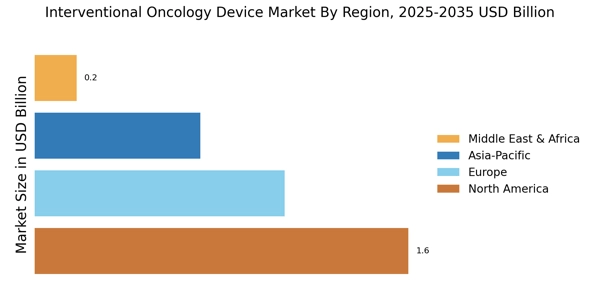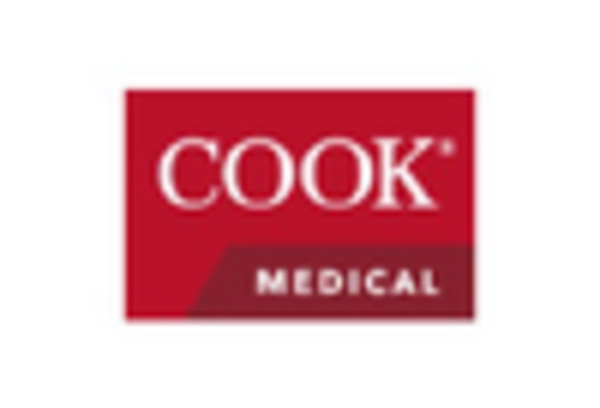Technological Innovations
Technological advancements play a pivotal role in shaping the Interventional Oncology Device Market. Innovations such as image-guided therapies, robotic-assisted surgeries, and advanced ablation techniques are transforming the landscape of cancer treatment. For instance, the integration of artificial intelligence in imaging technologies has improved diagnostic accuracy and treatment planning. Furthermore, the market for interventional oncology devices is expected to witness a compound annual growth rate (CAGR) of approximately 8% over the next few years, driven by these technological breakthroughs. As healthcare providers increasingly adopt these cutting-edge solutions, the Interventional Oncology Device Market is poised for substantial growth, reflecting the ongoing commitment to improving patient outcomes.
Rising Incidence of Cancer
The increasing prevalence of cancer worldwide is a primary driver for the Interventional Oncology Device Market. According to recent statistics, cancer cases are projected to rise significantly, with estimates suggesting that by 2040, there could be over 27 million new cancer cases annually. This alarming trend necessitates the development and adoption of advanced interventional oncology devices, which are crucial for effective treatment. As healthcare systems strive to manage this growing burden, the demand for innovative devices that facilitate minimally invasive procedures is likely to surge. Consequently, manufacturers are focusing on enhancing their product offerings to meet the needs of healthcare providers and patients alike, thereby propelling the Interventional Oncology Device Market forward.
Rising Awareness and Education
The growing awareness and education regarding cancer treatment options are driving the Interventional Oncology Device Market. As patients become more informed about their treatment choices, there is an increasing demand for effective and less invasive therapies. Educational initiatives by healthcare organizations and advocacy groups are playing a vital role in disseminating information about interventional oncology procedures. This heightened awareness is likely to lead to an increase in patient inquiries and referrals for interventional oncology treatments. Market analysts suggest that as more patients seek out these innovative solutions, the interventional oncology device market will experience a corresponding growth, reflecting the evolving landscape of cancer care.
Growing Demand for Minimally Invasive Procedures
The shift towards minimally invasive procedures is significantly influencing the Interventional Oncology Device Market. Patients and healthcare providers alike are increasingly favoring techniques that reduce recovery time, minimize pain, and lower the risk of complications. This trend is evident in the rising adoption of interventional oncology devices that facilitate procedures such as radiofrequency ablation and cryoablation. Market data indicates that the minimally invasive surgery segment is expected to account for a substantial share of the overall interventional oncology market, driven by patient preference and advancements in technology. As a result, manufacturers are investing in research and development to create devices that align with this demand, further propelling the Interventional Oncology Device Market.
Increasing Investment in Healthcare Infrastructure
Investment in healthcare infrastructure is a crucial driver for the Interventional Oncology Device Market. Governments and private entities are allocating significant resources to enhance healthcare facilities, particularly in emerging economies. This investment is aimed at improving access to advanced medical technologies, including interventional oncology devices. As healthcare systems expand and modernize, the demand for innovative treatment options is likely to increase. Reports suggest that the healthcare expenditure in many regions is expected to grow at a rate of 5-7% annually, which will likely benefit the interventional oncology sector. Consequently, this influx of capital is anticipated to stimulate the development and distribution of advanced interventional oncology devices, thereby fostering growth in the market.


















Leave a Comment